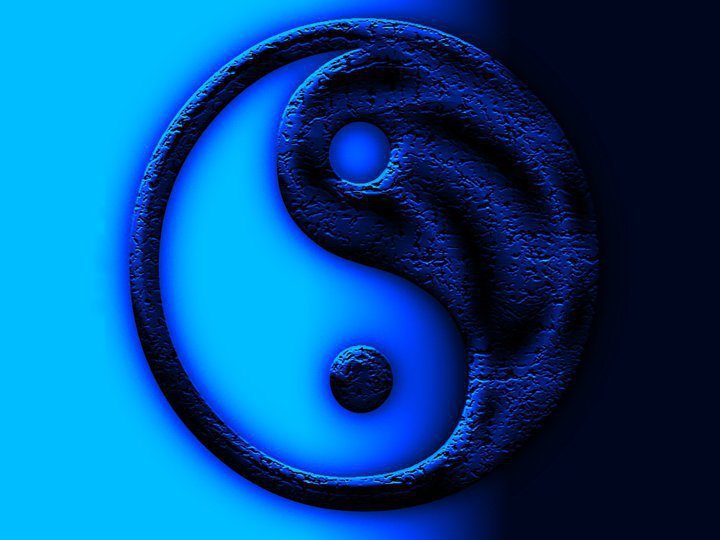The "Tai Ji Tu" (太極圖).

Beyond the union of yin and yang, this complete and powerful symbol of Taoism contains four fundamental principles, far more complex in their perception than the simple understanding of the symbolism of the opposite and the complementary. In Taoism, the existence of phenomena occurring in the world depends on their opposites. These opposites harmoniously transform into each other and complement each other, thus creating a coherent and harmonious whole. An easy example is the observation of cyclical phenomena such as day and night. They are clearly opposed, but one would not exist without the other, and together they create a greater whole: the day. But behind this terrestrial phenomenon lies another vaster cycle, that of the planets and other celestial bodies. I will use excerpts from the "Huangdi Nei Jing" (黄帝内经), which can be translated as "The Inner Classic of the Yellow Emperor", to support my explanations of the four fundamental principles of the "Tai Ji Tu". The "Huangdi Nei Jing" is a work more than two thousand years old, which established some of the foundations of traditional Chinese medicine and some philosophical principles of Taoism. In this reference work of classical Chinese literature, are the texts of the "Su Wen" (素問) or first book, which are the most important with regard to the foundations of the "Tai Ji Tu". Here are these principles:
The principle of the opposite and the complementary.
"The law of yin and yang constitutes the natural order of the universe, it is the basis of all things, the mother of all change, the root of life and death. (...)Yin and yang are inseparable and their mutual dependence is manifested in all the phenomena of the universe." Nei Jing Su Wen.Which means that the existence of phenomena occurring in the world depends on their opposites. These opposites harmoniously transform into each other and complement each other, thus creating a coherent whole.
The principle of relativity.
There is no pure yang and no pure yin. Even in the extreme yang, there is a yin aspect and vice versa. Phenomena are perceived as yin or yang in relation to each other. An example is the circadian cycle, where day is yang and night is yin. During the night, the moment just before dawn will be more yang compared to midnight, etc."It is said that yin is contained within yang and that yang is contained within yin. Day is considered the yang time and night the yin time"... "We can also divide it further: the time from morning to noon is yang within yang, the time from noon to sunset is yin within yang, the period from dusk to midnight is yin within yin, and the hours from midnight to dawn are yang within yin." Nei Jing Su Wen.
The principle of Yin and Yang interaction.
The imbalance of one extreme affects its opposite, which means that the two extremes (forming a coherent whole) are in imbalance. This principle also explains the states of excess of yang resulting from a real excess of yang or a deficiency of yin, and the states of excess of yin resulting from a real excess of yin or a deficiency of yang."Yin is the essence of the internal organs and the source of qi. Yang protects the body's surface from pathogenic influences and ensures the functioning of the muscles. When yin is unable to support yang, the circulation in the channels accelerates and there is an excess of yang qi, which then moves uncontrollably. If, on the contrary, the yang qi is deficient and does not provide a sufficient counterweight to yin, communication between the internal organs is disrupted and the nine orifices of the body cease to function." Nei Jing Su Wen.
Principle of the transformation of Yin and Yang.
When one of the extremes reaches its maximum, it transforms into its opposite. A good example is an attack of external cold which, penetrating deep into the body and reaching its extreme, transforms into heat - that is to say that a cold with symptoms of cold transforms into a cold with symptoms of heat."The yin and yang of the body must be in balance. If yang predominates, yin will be altered, and vice versa. Excess of yang manifests as a febrile disease, and excess of yin as a disease due to cold. However, if yang is extremely intense, it can transform into its opposite: a cold disease, and vice versa." Nei Jing Su Wen.
These four guiding principles are essential to the deeper understanding of common things, such as our health, our spirituality, our world view, our individual and professional projects, our management of our internal energy and many other things, from ecological balance to that of sexuality. Indeed.
Embun.
